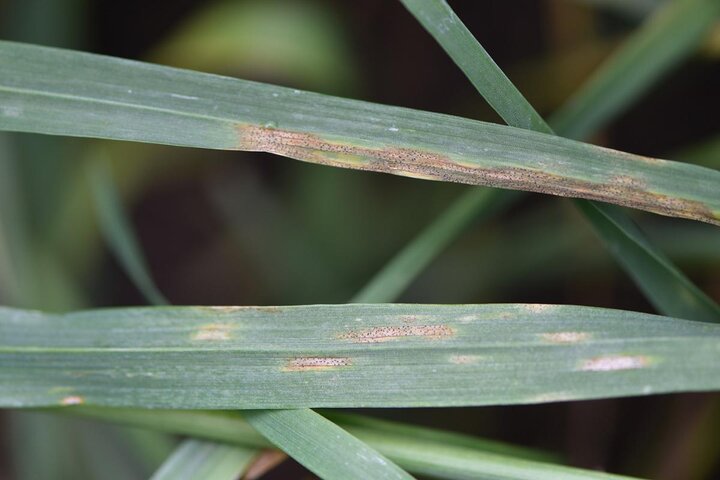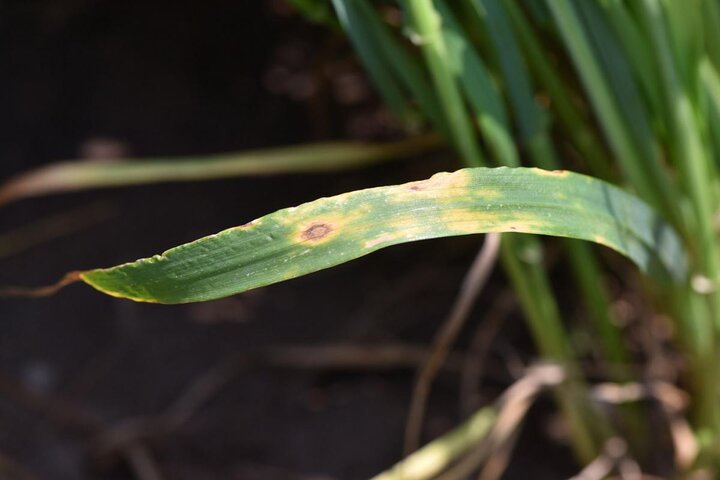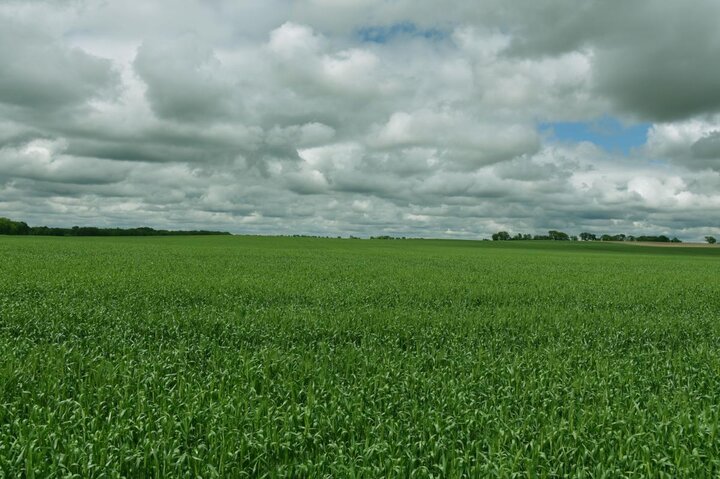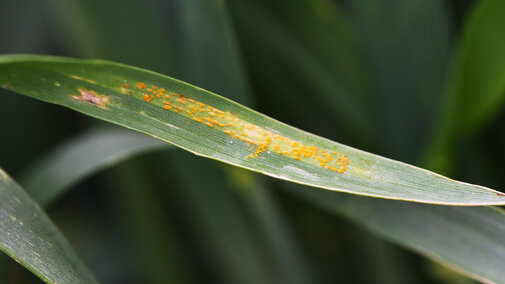During wheat disease surveys in Saline, Jefferson, and Perkins counties on May 29-30, stripe rust (Figure 1) was confirmed for the first time in Nebraska this growing season. The disease was found in a grower’s field in Perkins County on May 30. Incidence was low and severity was trace. In the same field, Septoria tritici blotch (Figure 2) was present at a high incidence and average to high severity on the lower leaves. In a different field in Perkins County, tan spot (Figure 3) was present at trace to low levels on the lower leaves.



All fields surveyed looked lush green on the surface of the canopy (Figure 4). Growth stage ranged from boot to starting to head in Perkins County. In Saline and Jefferson counties, most fields were headed or flowering and had trace to low levels of fungal leaf spots in the lower canopy except one field in Saline County that had powdery mildew in the lower and mid canopy in addition to fungal leaf spots.
Conditions are Favorable for Disease Development
Conditions are conducive for the development of fungal leaf spots and stripe rust where it is present. All fields surveyed had soils saturated with moisture and areas within fields with standing water were common. These conditions result in prolonged leaf wetness at night and continuous high humidity in the crop canopy. Coupled with cool night temperatures, these conditions are conducive for rapid development of stripe rust. In addition, the recent heavy and frequent rains that occurred before flowering and continued into the flowering period have increased the risk of Fusarium head blight (scab) which is favored by the high humidity currently present in wheat fields.
Management
Because many fields are headed or flowering, the best strategy is to apply a fungicide that will suppress scab and at the same time control stripe rust, leaf rust, and the fungal leaf spots (Septoria and tan spot). The recommended fungicides for suppression of scab and control of foliar fungal diseases are Prosaro, Caramba, and Miravis Ace. Each of these fungicides contains a triazole as an active ingredient. Triazoles have good efficacy on scab and good to excellent efficacy on powdery mildew, the rusts, and fungal leaf spots. They have residual effectiveness lasting 21 to 28 days and have both curative and preventive activity.
Fungicides containing a strobilurin as an active ingredient have good to excellent efficacy on powdery mildew, the rusts, and fungal leaf spots. They also have residual effectiveness lasting 21 to 28 days. Their activity is mostly preventive and therefore maximum effectiveness is achieved when they are applied before disease starts to develop. They delay leaf senescence, which lengthens the period of grain fill, resulting in higher yields. However, strobilurin fungicides are not recommended for suppression of scab because they have been shown to elevate vomitoxin (deoxynivalenol or DON) in grain and to be less effective than triazoles in suppressing scab.

